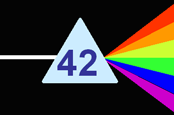ISO and IEEE publish new edition of standard for architecture description of systems
Revises the popular standard, IEEE 1471-2000™
2011-12-07 — for immediate release
 Architecture is an essential ingredient in the success of systems of
all kinds, from software and services to product lines and
enterprises. The ability to express, analyze and communicate these
architectures is key to that success. At the core of architecting
is architecture description: the practices of capturing and
documenting architectures to support the wide range of needs of diverse
system stakeholders.
Architecture is an essential ingredient in the success of systems of
all kinds, from software and services to product lines and
enterprises. The ability to express, analyze and communicate these
architectures is key to that success. At the core of architecting
is architecture description: the practices of capturing and
documenting architectures to support the wide range of needs of diverse
system stakeholders.
Architecture descriptions are the “blueprints” used by architects and others for planning, analysis, construction, evolution and coordination throughout the development and operating lifetimes of an enterprise or system.
The recently published ISO/IEC/IEEE 42010:2011, Systems and software engineering — Architecture description, specifies best practices for describing architectures to maximize their utility throughout the life cycle.
The standard builds upon a conceptual model in which an architecture description is organized into multiple architecture views, where each view addresses specific concerns originating with the system’s stakeholders. Diverse stakeholders entertain a variety of system concerns such as capability, cost of ownership, robustness, and usability which the architecture must face. To express these concerns, each view applies the conventions of its architecture viewpoint. A viewpoint determines the model kinds: notations, models, techniques and methods relevant to a view – thereby giving the creators and users of that view the basis for common understanding and analysis.
ISO/IEC/IEEE 42010 defines requirements on architecture descriptions as the work products used to express a system’s architecture. Architecture descriptions take the form of a document, a set of models, or a repository. The standard is designed to be compatible with an organization's existing architecture methods and processes, tools and techniques.
ISO/IEC/IEEE 42010 was produced by WG42 (the working group on Architecture) within ISO/IEC JTC 1/SC 7 (Software and systems engineering). The new edition replaces IEEE 1471-2000 and ISO’s international adoption of that standard (ISO/IEC 42010:2007).
In 2000, IEEE 1471 was published as the first formal standard for architecture description: establishing a conceptual foundation for systems architecture thinking, codifying then-current best practices and insights of the software and systems communities. At the time, there was an architectural “Tower of Babel” – architectural practices, architecture description languages, architecture methods, analysis techniques and architecting methods were rapidly evolving without a common base.
IEEE 1471 provided the community the means by which diverse practices could be uniformly defined, compared, consistently applied and evolved – as evidenced by textbooks, architecture methods, architecture frameworks, automated tools, and industrial and scholarly research utilizing the standard; recognizing the substantial benefits of a common conceptual foundation and terminology.
IEEE 1471-2000 was embraced by many communities and applied to architecture frameworks (such as TOGAF®, The Gartner Enterprise Architecture Framework, and The Rail Architecture Framework) and architecture description languages (such as OMG SysML™ and ArchiMate®). With the new edition, these efforts will be able to conform to ISO/IEC/IEEE 42010 by specifying their offerings in a uniform manner.
Based on 10 years of usage of the first edition by industry, academia and government, the revision adds new features including: modeling architecture decisions, correspondences across views, and support for architecture description languages (ADLs) and architecture frameworks.
Extending the concepts of the first edition, architecture frameworks and architecture description languages are introduced for codifying conventions and common practices. Requirements for conformance of architecture frameworks and architecture description languages are specified so that organizations may define and “standardize” their own reusable viewpoints, frameworks and ADLs. A Viewpoint Repository is now under development.
The standard’s annexes provide users with a template for defining architecture viewpoints, and guidance for use of the standard with ISO/IEC 12207 (Software life cycle processes), ISO/IEC 15288 (System life cycle processes) and ISO/IEC 10746 (Reference Model for Open Distributed Processing).
Building upon ISO/IEC/IEEE 42010, WG42 is now at work on a standard for Architecture Evaluation.
ISO/IEC/IEEE 42010 is available through the ISO Store or the IEEE Standards Store.
For more information about the standard, visit the
ISO/IEC/IEEE 42010 website:
http://www.iso-architecture.org/42010/.
Contact: Rich Hilliard.